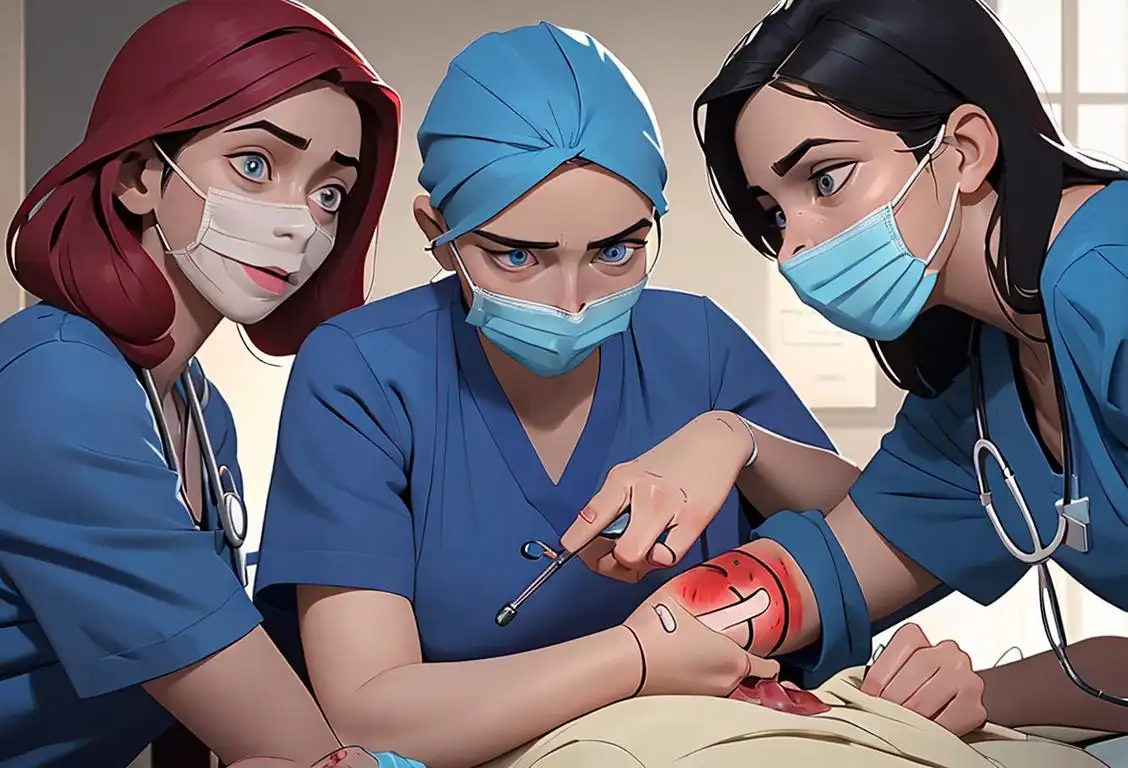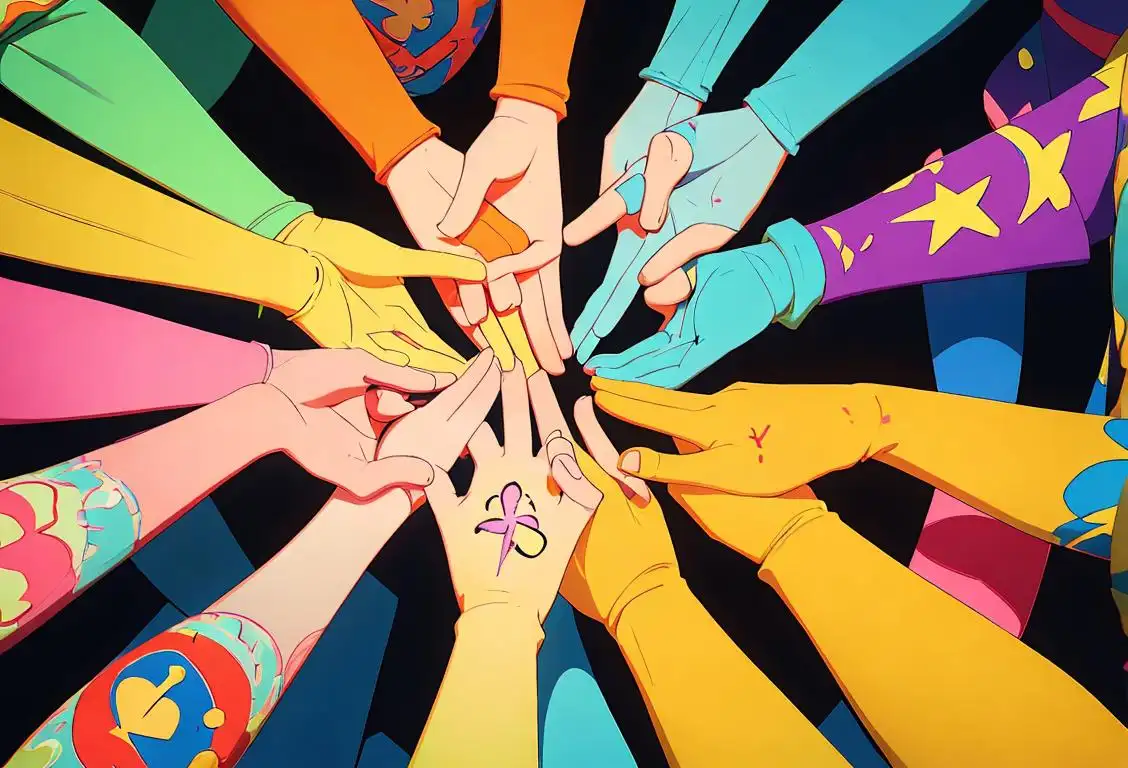National Stop The Bleed Day

Oh My Band-Aids! Isn't it exciting how there's a day devoted to something you've probably never given much thought? You’ve guessed it, it's none other than National Stop the Bleed Day! And I bet the first thing that came to your mind was, 'Wait, there's a day for that too?' Welcome to the peculiar yet important hooks and crooks of the internet.
When is Stop The Bleed Day?
It's national stop the bleed day on the 31st March.
A Closer Look at National Stop the Bleed Day
It's interesting to note that on the internet, things tend to snowball and before you know it, a regular day on the calendar turns into a day of national significance. Our case in point, National Stop the Bleed Day. It started innocuously enough with a wave of 3223 mentions online (surely a tsunami in Internet-land). Its popularity peaked on the 31st of March, 2018, turning it into a redletter day in the history of...Stopping the Bleed?
But don't let the humor overshadow the significance of the day. The impetus behind National Stop the Bleed Day is empowering ordinary folks with the knowledge and tools to help during a bleeding emergency before professional medical help arrives. Think of it as a CPR course, only this one's for staunching the red tide. Quite necessary, wouldn't you say? Because, while getting someone to LOL is fun, getting someone to STB (Stop The Bleed, remember?) could save their life.
Spreading the Word on National Stop the Bleed Day
So, how did we celebrate this unusually bloody day, you ask? Well, it's not as gory as it sounds! The day mostly involved comprehensive training programs, workshops, and campaigns aimed at equipping the common public with necessary life-saving skills. Demonstrations of pressure-application techniques, showcasing the correct usage of tourniquets, and presentations about wound packing were the order of the day. So, in short, it's not your typical 'fun day', but surely a useful one!
Making it Memorable
As odd as it may sound, National Stop the Bleed Day has a very important message to share. By promoting awareness and imparting critical knowledge on how to effectively control bleeding, it creates an army of unexpected heroes in everyday life. And, who knows, maybe the next time you've a small cut in the kitchen or a minor accident in your yard, you'd think back to this day and know exactly what to do.
So, remember, the 31st of March isn't just another day on the calendar. It's an opportunity to educate yourself, empower others, and become a potential life-saver. After all, who wouldn’t want to be a superhero for a day?
History behind the term 'Stop The Bleed'
2009
Birth of the Hemorrhage Control Symposium.
In the year 2009, the idea of 'Stop the Bleed' was born when the U.S. Army Institute of Surgical Research initiated the Hemorrhage Control Symposium. This symposium aimed to address the need for improved techniques and strategies to control bleeding in traumatic injuries. The event gathered various experts from the military, trauma surgeons, emergency medical technicians, and other providers in the field of critical care medicine.
2012
Advancements in combat bleeding control.
By the year 2012, advancements in combat bleeding control had become a significant focus for the military. The realization that hemorrhage was the leading cause of preventable deaths on the battlefield led to an increased emphasis on developing techniques and tools to stop bleeding rapidly and effectively. This steady progress laid the foundation for what would later become the 'Stop the Bleed' campaign.
2015
Launch of the 'Stop the Bleed' campaign.
In 2015, the 'Stop the Bleed' campaign was officially launched by the White House. It aimed to empower individuals, even those without medical training, to recognize life-threatening bleeding emergencies and provide immediate assistance to stop the bleeding before professional help arrives. The campaign included public education, training programs, and the distribution of bleeding control kits to schools, workplaces, and other public spaces.
2016
Emergence of 'Stop the Bleed' as a national movement.
In 2016, 'Stop the Bleed' gained significant attention and started to emerge as a national movement. Recognizing the importance of public involvement in saving lives during emergencies, the American College of Surgeons (ACS) joined forces with numerous stakeholders, including the Department of Homeland Security, in spreading awareness and providing bleeding control training to the general public.
2017
Passage of federal bill encouraging 'Stop the Bleed' training.
In 2017, the Federal Stop the Bleed Bill was signed into law. This legislation aimed to provide support and funding for the integration of bleeding control training into health education programs. The bill emphasized the need to educate and prepare individuals to take immediate action in situations involving severe bleeding, strengthening the nationwide commitment to the 'Stop the Bleed' movement.
Did you know?
The National Stop the Bleed Day campaign was actually initiated by the White House in 2015 to encourage bystanders to become trained, equipped, and empowered to help in a bleeding emergency.Tagged
awareness fun rememberance safety health heroFirst identified
9th October 2017Most mentioned on
31st March 2018Total mentions
3223Other days
Stop The Bleed Day
Women Physicians Day
Pollution Control Day
Safety Day
Broccoli Day
Bestfriends Day
Heroes Day
Suicide Prevention Day
Unemployed Day
No Bra Day








